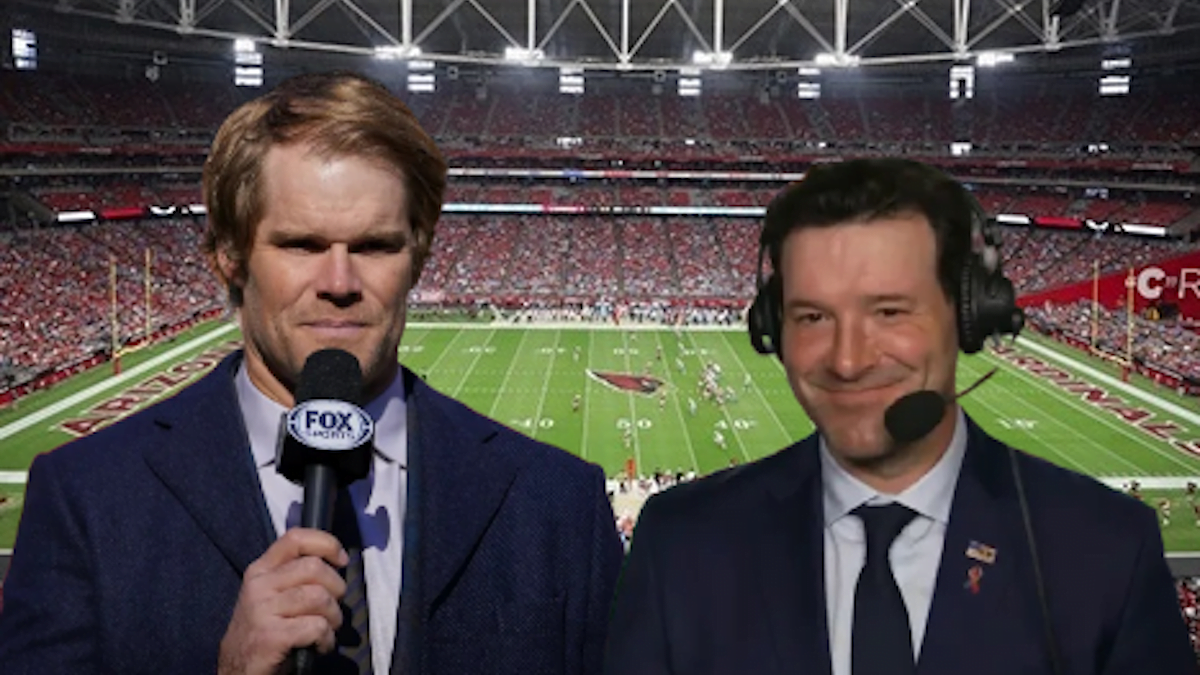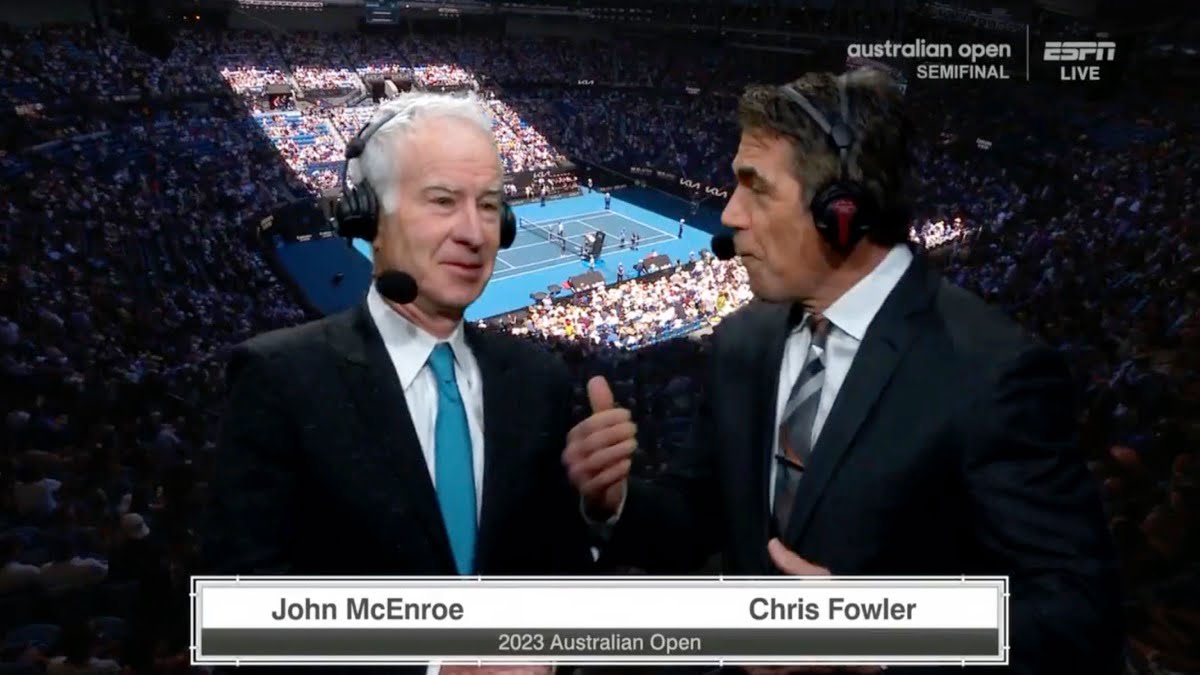Five years ago, Tony Romo retired as an active NFL player, jumped into the CBS broadcast booth, and immediately became the darling of fans and media for the excitement he brought to his telecasts. Romo’s enthusiasm for the game and understanding of modern offense allowed him to predict plays successfully, making him an instant sensation.
Greg Olsen will finish his second season as a full-time broadcaster on Feb. 12 from the NFL’s biggest stage, calling Super Bowl LVI for Fox with play-by-play partner Kevin Burkhardt. Olsen hasn’t drawn the must-see buzz that Romo did early in his TV career. No fan likely tuned into Fox’s top NFL telecast, “America’s Game of the Week,” to listen to Olsen’s analysis. His work doesn’t draw nearly the same amount of acclaim.
But the shine has worn off Romo with viewers during the past couple of NFL seasons. Watching a game with Romo in the booth previously felt like sitting alongside a fellow fan, jubilant at fantastic plays or clever strategy, and disappointed at performances that fell short. His energy also elevated Jim Nantz as a play-by-play announcer, bringing him back to life after 13 seasons alongside Phil Simms.
Now, however, Romo’s outbursts — noises in place of words, or outright yelling — seem like a crutch when coherent thoughts can’t be articulated. Where there was once fascinating insight from the analyst position, the former Dallas Cowboys quarterback often resorts to clichés and platitudes that don’t add to a fan’s understanding of what’s happening on the field.
Worst of all, Romo sometimes talks merely to talk, filling a quiet space when a broadcast needs to breathe or the images are saying enough on their own. That’s especially awkward when paired with a veteran like Nantz, who’s a master at letting the moment speak for itself rather than trying to punctuate it with unnecessary narration.
On Fox’s telecast of the 49ers-Eagles NFC Championship Game, Olsen explained how play-calling changes when an offense intends to go for it on fourth down. He showed an awareness of the strategies that each coach employed to gain an advantage or neutralize what the opponent was doing well.
Early on, he highlighted San Francisco defensive end Joey Bosa holding back on his natural impulse to pursue the quarterback at all costs. Instead, he maintained a position that prevented Eagles quarterback Jalen Hurts from running to gain yardage when pass plays weren’t available.
With analysis like this, Olsen creates the perception that he studies each team, breaking down the film of their respective offenses and defenses, in preparation for the telecast. He doesn’t appear to be surprised by what he sees because that prep work — watching film, talking to coaches and players — informs him of the eventualities and possibilities that could arise during a game.
The hardcore football fan, those who repeatedly watch highlights and replays, loves that kind of analysis. Such attention to detail feels gratifying because it demonstrates that the person calling the broadcast is as serious about this stuff as the viewer who’s waited all week for the big game.
Yet a more casual fan is also drawn in because of Olsen’s amiable personality and ability to explain things simply and clearly. It’s similar to what viewers enjoy about ESPN’s “ManningCast” for Monday Night Football. Yes, there are jokes and funny moments. But Peyton and Eli Manning both explain strategy and preparation very well.
By comparison, Romo comes off like a broadcaster who’s winging it, letting his personality and enthusiasm fill gaps created by a lack of preparation. That might be a completely unfair criticism. We don’t know what kind of work Romo puts in leading up to a telecast. Maybe he watches as much film as Olsen. Perhaps he talks to everyone available to the broadcast crew in production meetings.
If so, however, that doesn’t show itself on the CBS telecast. Romo’s work on Sunday’s Bengals-Chiefs AFC Championship Game telecast was an improvement over his call of the Bengals-Bills divisional playoff clash. During the previous week, Romo acted as if he didn’t have to provide any insight because this was the match-up fans had anticipated all season and already knew everything about the two teams.
Perhaps in response to that criticism, Romo made a point of highlighting the importance of each team’s defensive coordinator — Cincinnati’s Lou Anarumo and Kansas City’s Steve Spagnuolo, respectively — in disrupting the performance of quarterbacks Patrick Mahomes and Joe Burrow. But rather than demonstrate an actual strategy during a replay, he stated that each defense would come after the opposing QB and create pressure.
Ultimately, the difference between Romo and Olsen seems to be schtick versus knowledge. But it’s also a product of how each analyst reached their position. Romo joined CBS’s No. 1 NFL broadcast team without previously calling any games. (As BSM’s Garrett Searight points out, that immediacy and recent connection to the game fueled what felt like fresh analysis.)
Meanwhile, Olsen called games during bye weeks while he was still an active player and was on Fox’s No. 2 crew with Burkhardt before being elevated to top status following the departure of Joe Buck and Troy Aikman to ESPN. He’s had to get better out of necessity. Even now, as Olsen establishes himself as his network’s top analyst, he faces the possibility of being bumped from that position when Tom Brady retires and cashes in on the massive contract Fox offered him.
Compare that to Romo, who’s the highest-paid NFL analyst on television. His $18 million annual salary set the bar other top broadcasters are trying to reach. And he has seven years remaining on the 10-year contract he signed with CBS. That is significant job security. Even if network executives (or Nantz) lean on Romo to improve his flaws, how much motivation is there when he’s already been anointed a broadcasting king?
However, NFL fans and sports media are making it clear what they prefer from their football broadcasters. They want insight and substance. They want to learn something from the commentary, rather than just be told what they can see for themselves.
Olsen is providing that and is being rightly lauded as a broadcaster living up to his status. Romo is suffering a fall from acclaim and has become a weekly punching bag. If he and CBS want to change that, he’ll have to bring more to the booth each week. In the meantime, Fox should consider appreciating what it already has, rather than welcome a glitzy name.
Ian Casselberry is a sports media columnist for BSM. He has previously written and edited for Awful Announcing, The Comeback, Sports Illustrated, Yahoo Sports, MLive, Bleacher Report, and SB Nation. You can find him on Twitter @iancass or reach him by email at iancass@gmail.com.








romo is still the best analyst. its only the media and blue checkmarks who whine about him. olsen and romo are both light years better than the cardboard troy aikman who has never said anything memorable or accurate. and as for fans, when you see the repeatedly idiotic comments they make you can tell that they know little about the game or strategy and why things happen. this has ALWAYS been the case. if the broadcasters wanted to teach fans real football they would show the behind the qb perspective so fans could see, often in advance, why some passes shouldn’t have been thrown and judge for themselves the incompetence of some qbs. why do you think video games always have this perspective for gameplay? its the broadcasters who dont get it. with current widescreen tvs there is no reason not to offer it at least as an option like espn did with the skycam for the college playoff. its a dual edged sword. bad presentation and poor analysis. when is the last time any analyst mentioned running the ball instead of a pass late in either half to preserve a lead? ask tennesee how that worked out. or the chargers for that matter.